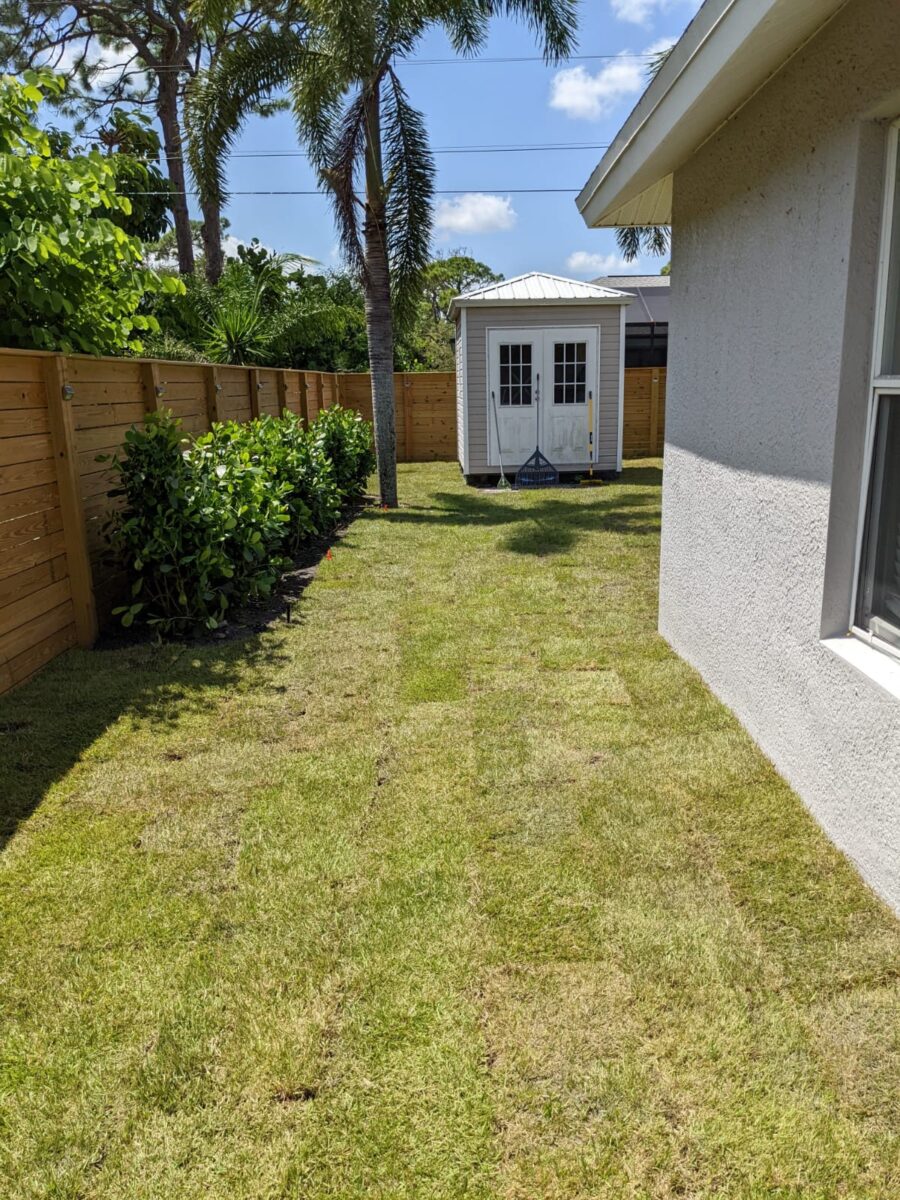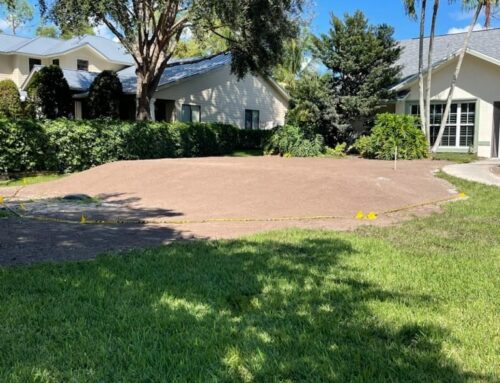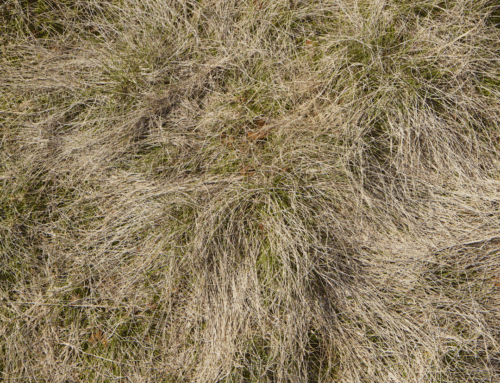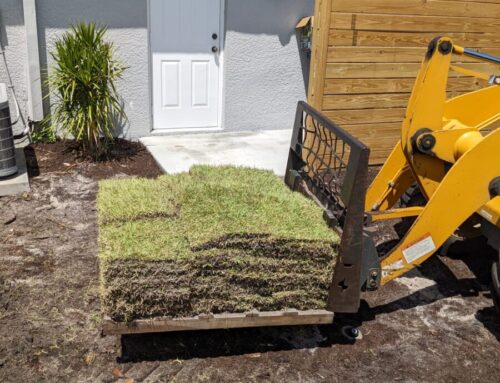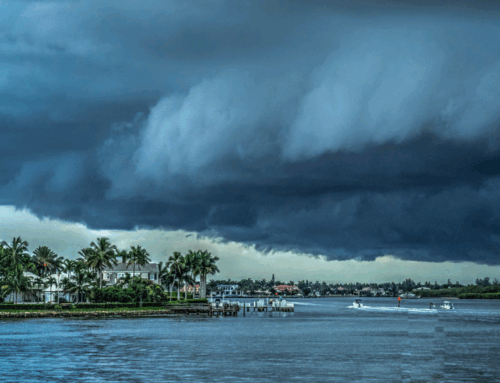From June through November, Florida homeowners face the yearly reality of hurricane season. While storm prep usually focuses on boarding windows and stocking supplies, your lawn needs protection too, especially if you’ve recently installed sod or want to preserve a beautiful landscape.
At Sunshine Sod, we’ve helped countless customers prepare their lawns before the storm and recover afterward. Here’s what you need to know about safeguarding your sod before, during, and after Florida’s most turbulent season.
Pre-Storm Lawn Prep: What to Do Before the Rain Hits
The best time to protect your lawn is before the winds pick up. Even tropical storms can cause damage to your grass if your lawn is overgrown, waterlogged, or covered in debris.
Trim & Clean
- Mow your lawn 1–2 days before a storm (but don’t scalp it)
- Remove branches, toys, patio furniture, and loose objects
- Prune trees and shrubs to reduce the chance of debris falling on your sod
Pro Tip: A well-manicured lawn drains water more efficiently and is less likely to be uprooted in heavy rains.
Pause Fertilizer & Weed Control
- Do not fertilize sod in the days leading up to a storm
- Chemicals can be washed into storm drains and local waterways
- Wait until at least 7–10 days after the storm to resume treatments
Check Drainage
- Make sure gutters and downspouts direct water away from sod areas
- Clear any clogs in drainage swales or French drains
- If your yard has low spots, consider temporary grading or sandbags
Poor drainage is one of the fastest ways to ruin new sod.
During the Storm: Let Nature Do Its Thing
There’s not much you can do while the storm is active—but staying off your lawn is crucial.
DO:
- Keep people and pets off the grass
- Let rainwater soak in naturally
DON’T:
- Walk on soggy sod (this causes compaction and root damage)
- Try to mow, rake, or fertilize during ongoing rain or wind
Let the weather pass and wait until the lawn dries slightly before stepping on it.
After the Storm: Recovery Starts With Assessment
Once the skies clear, your first task is to check for damage and start cleanup.
Remove Debris
- Clear leaves, branches, or trash off your sod as soon as it’s safe
- Use a leaf blower or rake gently—don’t rip or disturb sod rolls
Let the Lawn Breathe
If your sod is waterlogged:
- Avoid walking on it for 24–48 hours
- Wait to mow until the ground feels firm again
- If you see puddles, try lightly loosening the soil or adding topsoil to low spots
Check for Root Health
- New sod may lift at the edges after heavy rain—press it back down gently
- If roots appear exposed, cover with a light layer of topsoil or compost
- Re-water lightly 1–2 days after the storm to restore root zone moisture
When to Resume Treatments
Once the ground is no longer saturated:
- Resume mowing once the grass reaches the ideal height
- Apply fungicide if brown patches appear, especially in humid post-storm weather
- Fertilize 1–2 weeks after the storm to support recovery (avoid high-nitrogen)
Watch for Longer-Term Damage
Sometimes storm damage doesn’t show immediately. Keep an eye out over the following weeks for:
- Yellowing or browning
- Sod lifting or shifting
- Signs of fungus or insect infestations (especially chinch bugs in St. Augustine)
If sections don’t bounce back after 2–3 weeks, you may need to patch or replace damaged sod areas.
Florida Lawns Are Resilient (With a Little Help)
Your sod is tougher than it looks—but hurricanes are too. With a proactive approach, you can limit damage, prevent costly repairs, and help your lawn recover faster once the storm passes.
At Sunshine Sod, we’re not just sod suppliers—we’re Florida lawn experts. Whether you need help prepping before a storm or restoring your lawn after one, we’re here to help.
📞 Need post-storm sod or repair advice?
🌱 Contact us today for a free quote or to schedule replacement sod delivery.

